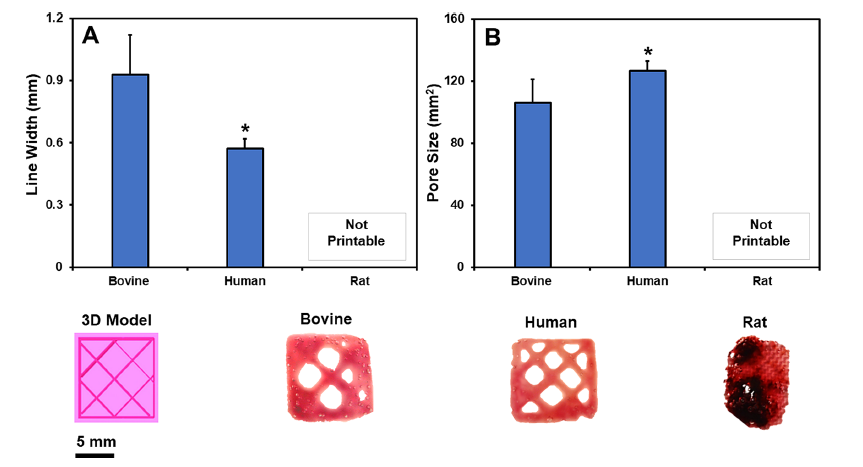Species-Based Differences in Mechanical Properties, Cytocompatibility, and Printability of Methacrylated Collagen Hydrogels

Researchers compared the effects of three collagen species (bovine, human, and rat), two collagen extraction methods (pepsin digestion and acid extraction), and two photoinitiators on the physical properties of CMA hydrogels, printability, and mesenchymal stem cell (MSC) response. They found that human collagen showed the highest MD and yielded constructs with superior print fidelity. The results suggest that careful selection of collagen source and cross-linking conditions is essential for designing biomimetic CMA hydrogels for tissue engineering applications.

The printability of collagen methacrylate (CMA) was evaluated based on different species variations. Qualitative assessment of print fidelity revealed that using bovine CMA and human CMA as inks resulted in 3D constructs that closely resembled the designed 3D mesh model (above). However, when rat CMA was used, the printed constructs exhibited deformities and were deemed unsuitable for printing. Quantitative measurements were conducted to further analyze the printed constructs. It was observed that constructs printed with human CMA displayed significantly finer line width and larger pore size compared to those printed with bovine CMA. These findings suggest that human CMA exhibits superior print fidelity, making it a viable bioink for 3D printing of collagen constructs.
Humabiologics is a regenerative medicine company founded by scientists and tissue industry experts to address the gap between the gift of donated human tissues and researchers. Contact us at info@humabiologics.com.

